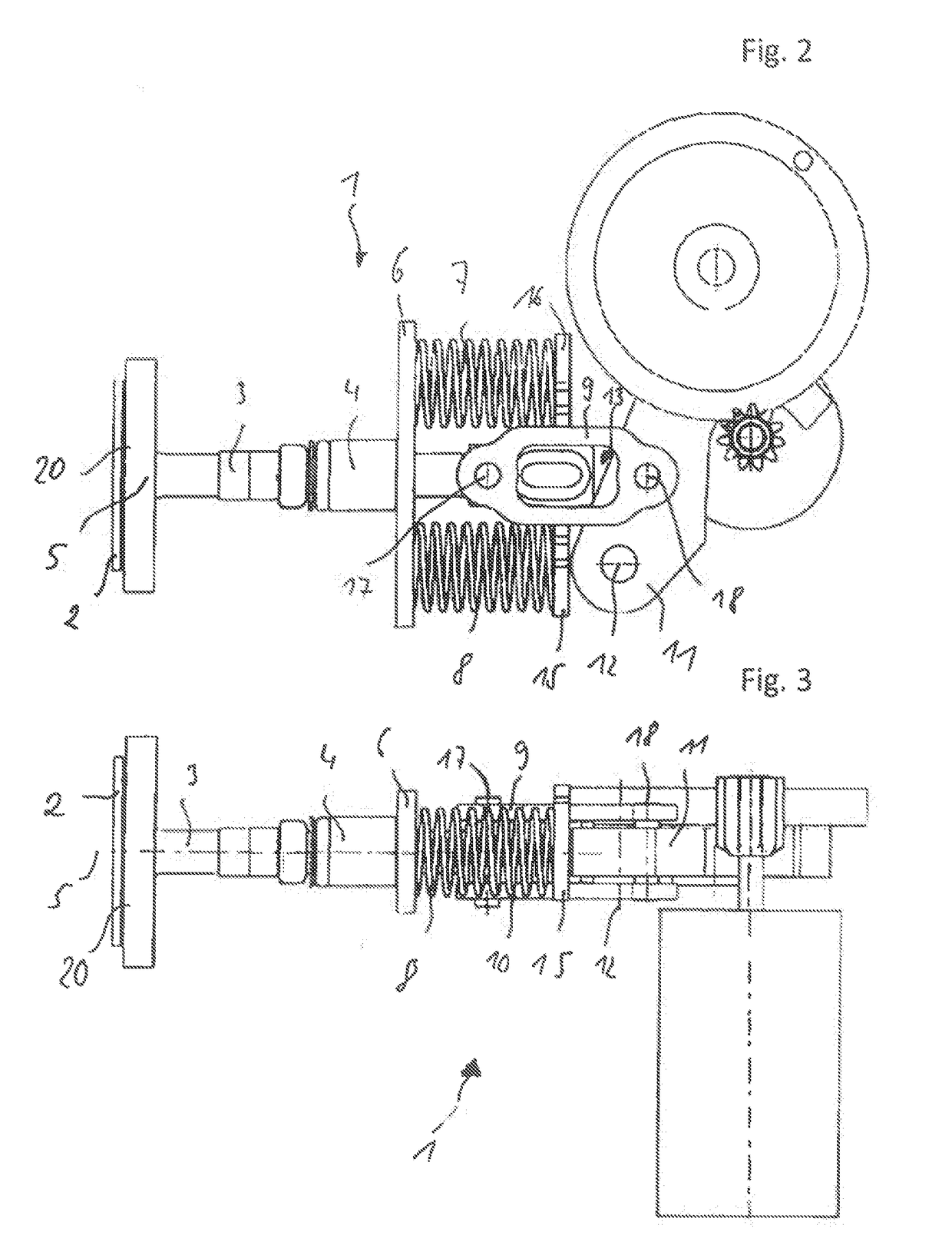Valve
a valve and plunger technology, applied in the field of valves, can solve the problems of reducing service life, generating unsatisfactory transverse forces, and reducing the service life, so as to reduce the assembly and the required structural space, and effectively prevent the tilting of the valve plunger
- Summary
- Abstract
- Description
- Claims
- Application Information
AI Technical Summary
Benefits of technology
Problems solved by technology
Method used
Image
Examples
Embodiment Construction
[0028]FIG. 1 shows a perspective view of a valve 1. The valve 1 has a valve disk 2 which is rigidly connected to a valve plunger 3. The valve plunger 3 is mounted so as to be movable along an axis 5 by a radial hearing 4 which is formed by a sleeve. The axis 5 also corresponds to the central axis 5 of the valve plunger 3, The valve disk 2 can be moved along the central axis 5 of the valve plunger 3, whereby the valve disk can be moved into a valve seat 20 or out of the valve seat 20. In this way, a flow path can be opened or closed. The valve seat 20 is indicated in FIGS. 1 to 4 as a ring-shaped element and is preferably part of a housing (the rest of which is not shown) which delimits, for example, a flow duct.
[0029]The plate element 6 is illustrated representatively as a spatially fixed structure, for example a housing. The valve 1 can be advantageously integrated into this spatially fixed structure, and in particular, the illustrated springs 7, 8 can be supported relative to the ...
PUM
 Login to View More
Login to View More Abstract
Description
Claims
Application Information
 Login to View More
Login to View More - R&D
- Intellectual Property
- Life Sciences
- Materials
- Tech Scout
- Unparalleled Data Quality
- Higher Quality Content
- 60% Fewer Hallucinations
Browse by: Latest US Patents, China's latest patents, Technical Efficacy Thesaurus, Application Domain, Technology Topic, Popular Technical Reports.
© 2025 PatSnap. All rights reserved.Legal|Privacy policy|Modern Slavery Act Transparency Statement|Sitemap|About US| Contact US: help@patsnap.com



